Research
Engaging people in meaningful science to inform our actions
The ecosystems of the San Diego River Watershed are teeming with fascinating interactions between the physical environment and the living flora and fauna. We work to ground our conservation and restoration work in sound science, and to preserve and protect the rich biodiversity of the San Diego River watershed. In addition to collecting data to monitor baseline conditions, we also focus on emerging issues that impact the River and its surrounding habitats. We train and support community members to engage in scientific research, and partner with technical experts to advise our work. We also use science as a powerful tool to engage students in appreciation of nature.
Current research areas of focus
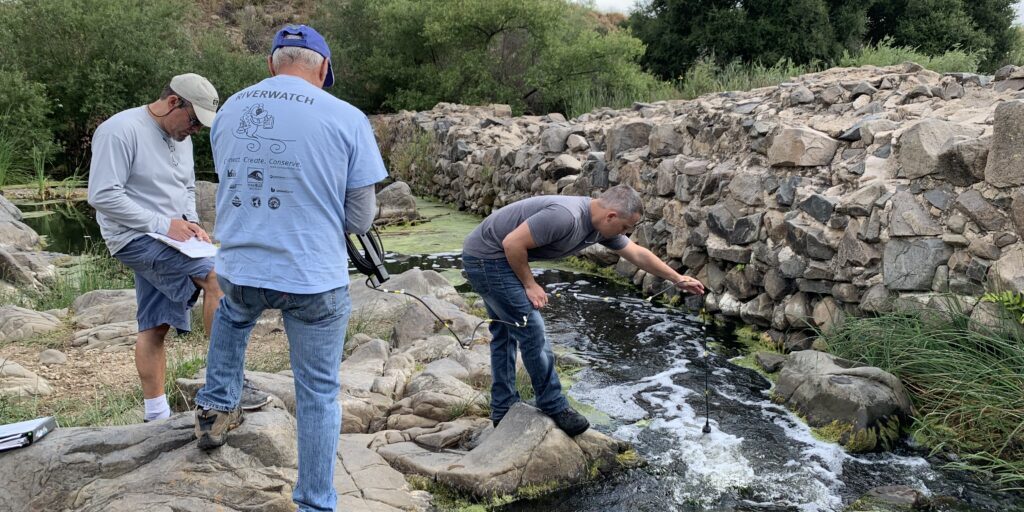
Water Quality
Since 2005, we have coordinated volunteers to conduct monthly monitoring of water chemistry and nutrient levels at what is now 16 different locations on the lower river. We use the data for advocacy efforts and to identify actionable issues. We also do focused studies to further understand the health of the river, and work on long-term studies such as our work with the U.S. Bureau of Reclamation.
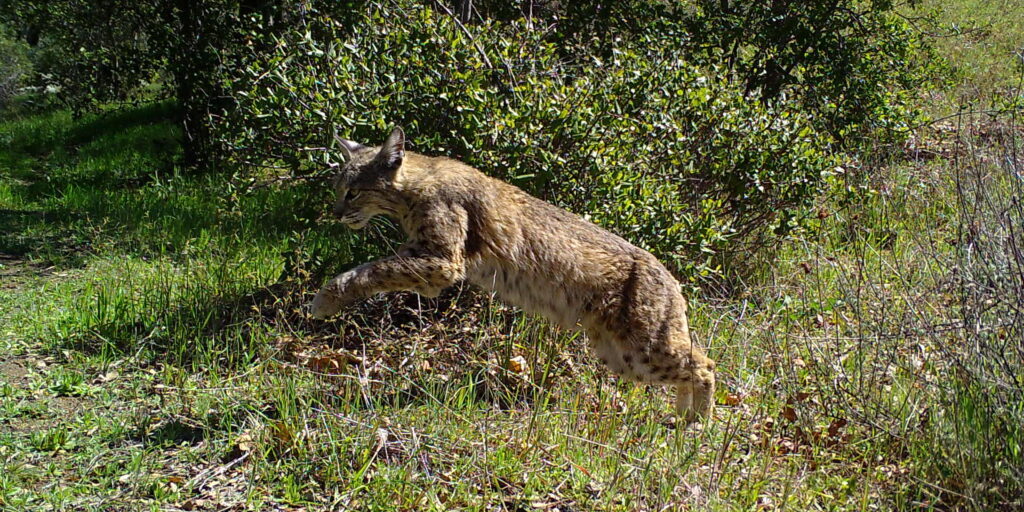
Getting a glimpse of an animal in the wild is always a thrill! However, many of the species that rely on the habitats along the San Diego River are elusive, and some are nocturnal, making them less likely to be spotted while we’re in the field. But we see evidence if we look carefully! We see their tracks, scat, burrows or other signs. Another way we can document the presence and movement of these species is through motion-triggered camera traps, which regularly capture all kinds of animals, like this bobcat, or cougars, gray fox, ringtailed cats, long-tailed weasels, badger, hawks, owls, and more. Sometimes we see interesting behaviors, cubs and kits, or even invasive, nonnative animals. Understanding how these animals move through the land helps us prioritize our land conservation and land management.
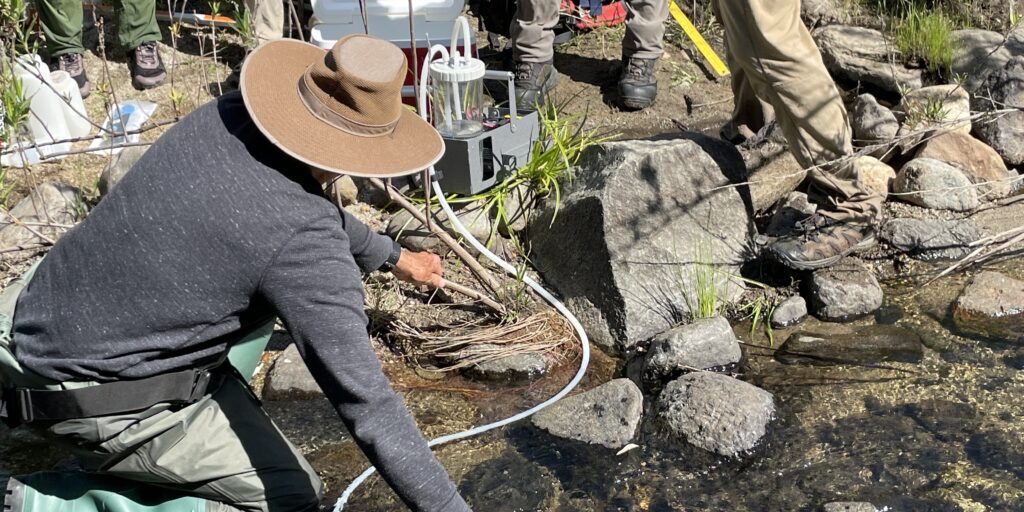
eDNA
Another way to detect the presence of species in and near the water is by analyzing eDNA, or environmental DNA. As animals swim or walk through the water, they shed cells that contain their DNA. By pushing water samples through special filters, we can collect those cells from the water and send them to a lab to identify the species present in the water. In this way, we can look for sensitive aquatic species, like California newt, rainbow trout, arroyo toad, or pond turtles, terrestrial species like cougars and ringtailed cat, and even invasive animals like crayfish, green sunfish or feral pigs. We complete these eDNA collections in remote backcountry streams, in partnership with the State Water Board and the San Diego Fly Fishers.
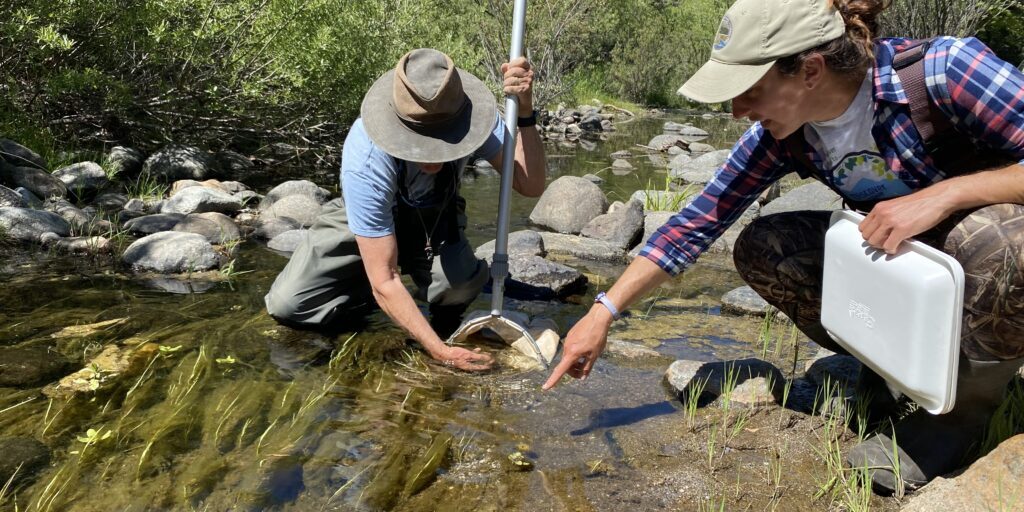
Bioassessments
We can learn a lot about the health of a stream by studying the organisms that live in it. Environmental scientists have determined that the presence, abundance, and diversity of organisms (fish, insects, algae, and plants) can unlock secrets about the health of the stream. These types of plants and animals are called biological indicators. We conduct bioassessments on key streams in partnership with the State Water Board to better understand the biological integrity of these important waterways.
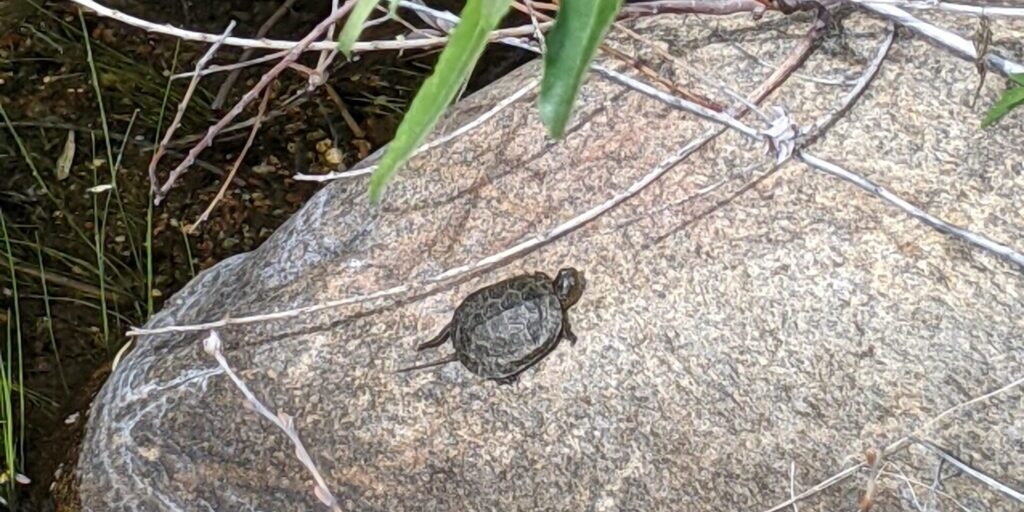
Indicator Species: Pond Turtles
The western pond turtle is the only remaining freshwater turtle species native to California. While its range used to stretch from Washington state to northern Baja, it is now increasingly rare, and considered a Species of Special Concern in California. Habitat loss and invasive species predating eggs and hatchlings are some of the largest threats. Thankfully, western pond turtles like this one photographed in Cedar Creek during one of our headwaters assessment surveys, are still finding refuge in the upper San Diego River watershed, which indicates there is still suitable habitat for these special animals! Our research program helps collect data to inform management to protect their habitats.
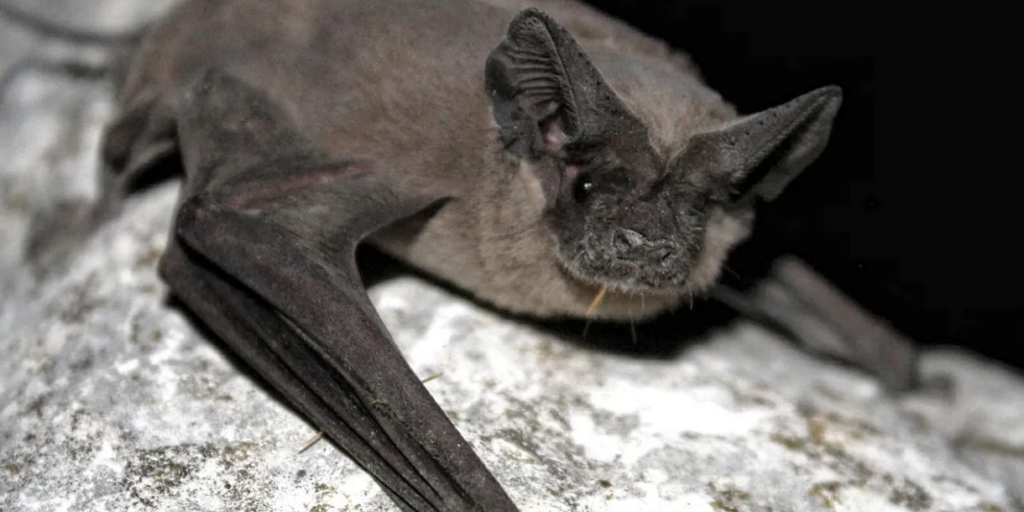
Indicator Species: Bats
Bats are under unprecedented threat worldwide due to habitat destruction, climate change, invasive species and other stresses. Bats are a signature species along the San Diego River and the creeks that feed it because they eat insects that hatch from the water. Most of the 22 species of bats found in our watershed are insectivores, meaning they also benefit us by consuming pests like mosquitoes and flies. Our research team uses acoustic monitors to listen for their ultrasonic calls which act like a sonic fingerprint to identify each bat species we encounter.

Indicator Species: Badgers
The American badger has a very large home range, with a single individual traveling across over 2,000 acres of land to find food, shelter and mates. This range makes them uniquely suitable as an indicator species for assessing connectivity of grasslands and upland habitats. We monitor for badgers by surveying our preserves and other conserved lands to help prioritize conservation of wildlife corridors.
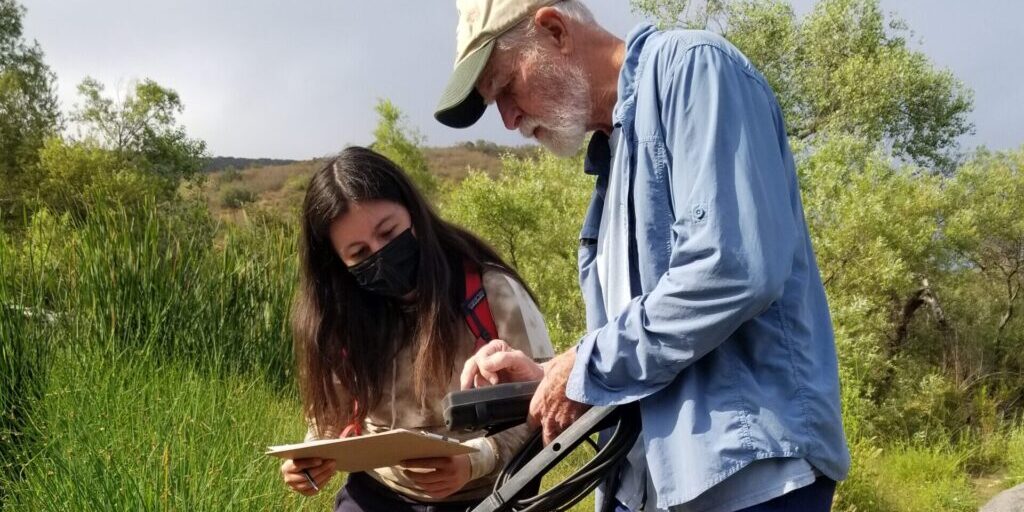
Reports and Resources
You can view data and reports generated by our research programs at our online information center.
